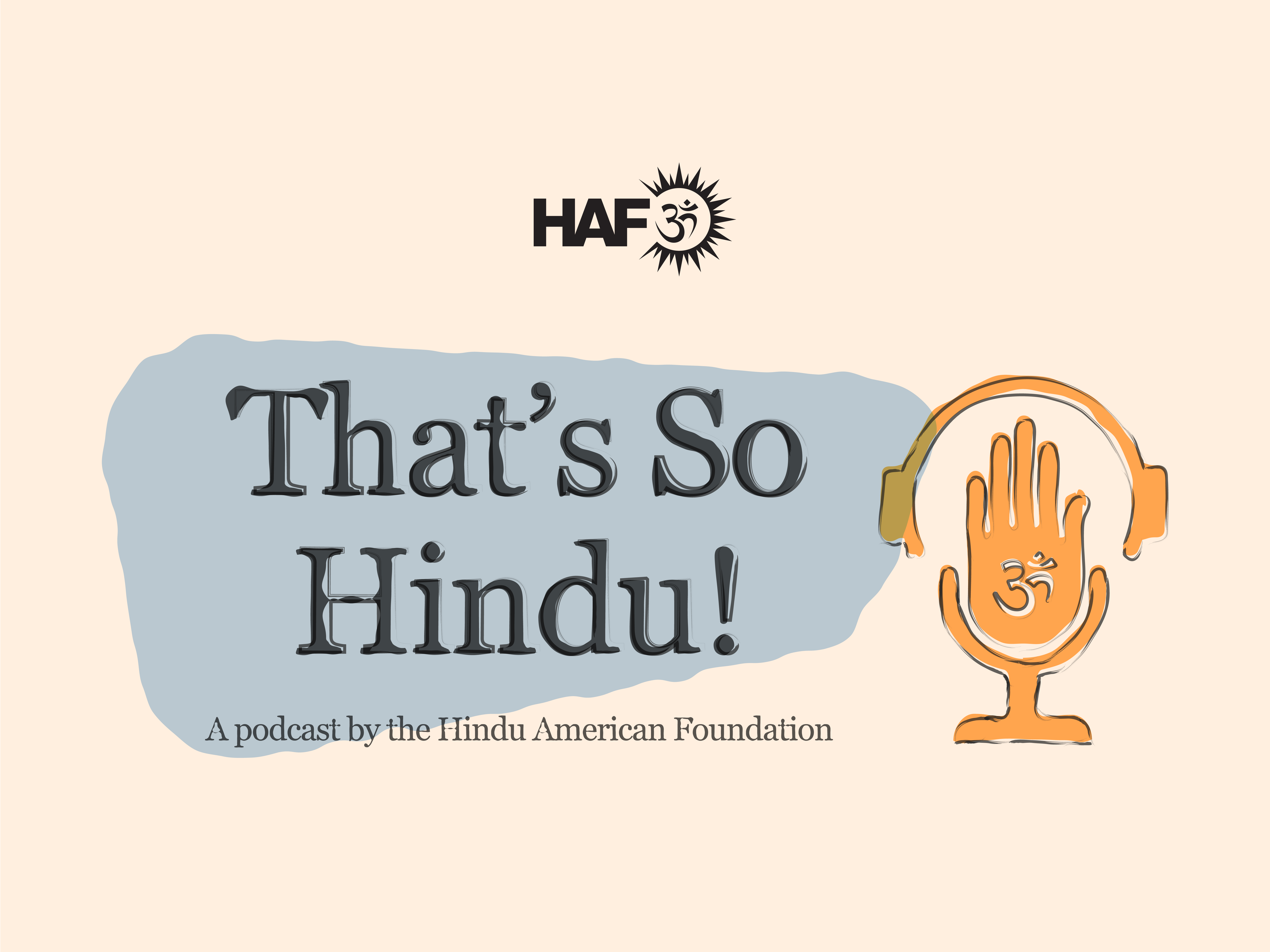
From October 3-5, 2019 I was invited to speak at the Yeoju EcoForum, in Yeoju, Korea. The following talk was given during the panel session “The Potential Role of Independent Spiritualists” on October 4th.

What is yoga?
In one sense yoga today is a multi-billion dollar global fitness industry. As such yoga is perhaps India’s and Hinduism’s greatest contribution to global culture of the late 20th and earliest 21st centuries. But that yoga, the physical postures, is just one part of a greater tradition of yoga — something which is increasingly being acknowledged by that multi-billion dollar yoga industry, even if for most people who go to a yoga class are there to tone their bodies or improve their relaxation, rather than for the spiritual aspects that were for centuries the ultimate goal of yogis. Which is not to belittle the benefits of just practicing asana in any way. Practicing that limb of yoga alone can be very fulfilling and useful for many people. But the postures are just one part of one branch of, if you will, the tree of yoga.
Before we examine that tree, some etymology and definitions are needed.
The word yoga itself comes from a Sanskrit root meaning to yoke or to unite, with the implication being this uniting is of the individual with the whole of existence, of the individual self with the transcendent Self, or the individual with the Divine.
Along the way to that greater uniting, the union of mind, body, and spirit that the modern Western yoga community focuses on does occur, but this is not the ultimate goal of the traditional yoga practices.
Nevertheless, that literal definition of the word yoga carries through the entirety of the yoga tradition, or perhaps more properly, yoga traditions, plural.
Georg Feuerstein opens his book The Yoga Tradition by saying, “Yoga is a spectacularly multifaceted phenomenon, and as such it is very difficult to define because there are exceptions to every conceivable rule. What all branches and schools of yoga have in common, however, is that they are concerned with a state of being, or consciousness, that is truly foundational. One ancient yoga scripture, Vyasa’s Yoga Bhashya, captures this essential orientation in the following equation: “Yoga is ecstasy.””
The word Sanskrit word Feuerstein translates as ‘ecstasy’ here is samadhi. He goes on to explain, breaking down how that word is composed, that the literal meaning of that word is placing or putting together, noting that what is put together, what is unified, “is the conscious subject and its mental object or objects. Samadhi is both the technique of unifying consciousness and the resulting state of ecstatic union with the object of contemplation.”
Continuing with Feuerstein’s description of yoga:
“Yoga refer to that enormous body of spiritual values, attitudes, precepts, and techniques that have been developed in India over at least five millennia and that may be regarded as the very foundation of the ancient Indian civilization. Yoga is thus the generic name for the various Indian paths of ecstatic self-transcendence. […] The word yoga has also been applied to those traditions that have been directly or indirectly inspired by the Indian sources, such as Tibetan yoga (Vajrayana Buddhism), Japanese yoga (Zen), and Chinese yoga (Ch’an).”
Though not included in the quote, there are also Jain and Sikh practices that are also yoga, it should be noted.
Among these practices and techniques are what are sometimes referred to as the four paths or types of yoga: karma yoga, bhakti yoga, raja yoga, and jñana yoga.
These four paths of yoga are not necessarily meant to be practiced in sequence, nor are they exclusive of one another.
Some lineages within Hinduism emphasize the importance of one of these paths as being easier, or more applicable to more people, than the others. Gaudiya Vaishnavism places great importance on bhakti yoga for example. Some teachers of raja yoga place bhakti yoga in a secondary position. Other gurus recommend focusing on karma yoga before practicing the other paths. And, in practice, most yoga practitioners do tend to focus most on one path more than the others. However, these different methods are interconnected, reinforcing one another.
What are they?
Karma yoga is the yoga of service, the yoga of doing, working, giving back, helping others. Everything from doing volunteer work in the community, to work in civil society organizations and non-profits, to simple daily actions of service towards you family can all be seen as karma yoga if they are done in this mood of selfless service, of putting others before yourself.
Bhakti yoga is the yoga of devotion, generally towards the Divine and recognizing the divinity in everyone and everything, but it is also performing all your actions with the Divine in your heart. This takes the form of music, poetry, art, drama and other worldly actions of devotion.
Raja yoga is the yoga most people think of in the West when they hear the word ‘yoga’. It’s using physical exercises and postures, breathing exercises, concentration, and meditation. The famous text by Patanjali, the Yoga Sutra, falls under raja yoga. You may have heard the term hatha yoga. Though not exactly synonymous with raja yoga, broadly speaking the practices described as hatha yoga fall into this path. The teachings of the most famous of yoga gurus who brought asana to the West in the last century, and which morphed into the Western postural yoga practices, originated here. Though in the past few decades that Western practice has embraced elements of karma yoga and bhakti yoga as well.
Historically the path of raja yoga was one to be undertaken only by people who chose to dedicate the entirety of their time to it, ascetics, renunciates of the world. And these people have always been seen as outside the mainstream of society. Most, if not all, of these people were men. But, for the past century this practice has opened up and more and more people undertake it — something that has occurred in no small part because of Western practitioners and has come back to India. Whether you renounce the world or engage in it to truly reap the benefits of raja yoga, you must practice with dedication, daily ideally, several times a week at minimum, for years.
Jñana yoga, is the yoga of knowledge, studying, analyzing, and contemplating spiritual texts. In jñana yoga, knowledge isn’t just intellectual knowledge or accumulation of facts, but rather knowing the Divine, distinguishing between what is transitory and what is permanent in existence, and ultimately seeing the sameness or shared essence between our individual selves and the Divine.
Important to remember: though outwardly very different in method the ultimate goal of each of those four different paths of yoga is still a deeper connection between the individual practitioner and the totality of existence, it is still self-transcendence, or Self-realization.
To connect these paths of yoga, in particular bhakti yoga, to ecological sustainability and conservation, we must take a quick look of how Hindu philosophy describes the relationship of humanity and nature.
For this next section I must mention that its formulation is the result of a book, ultimately not published, that I was working on with Shaunaka Rishi Das, head of the Oxford Centre for Hindu Studies. In particular I owe Shaunaka a debt for the bringing to the fore the concept of ṛta and an ecological interpretation of it to my thinking on this subject.
If you want to understand Hindu views on nature and our environment, that is, the relationship between human beings and all the other forms of life, seen and unseen around us on this planet and throughout manifest existence, you must first consider the idea of ṛta.
Ṛta appears in the Ṛg Veda, the oldest book of philosophy in the world, dating back at least 5000 years. Ṛta is a simple idea to understand. It means order, the order of how things are, the order of the cosmos. It is based on the premise, observed by the sages who composed the Ṛg Veda, that we are all born into a purposeful cosmic ecosystem.
We, as humans, did not create it and it will continue after humans have gone extinct, however distant that may be in the future. Thus, it follows that each of us are a small part of a greater whole.
We must become mindful of our role in this natural order (a very small role, in cosmic terms), so that we may make our best contribution in life. When we are not mindful of our role, it becomes as when a small cog in a very big machine refuses or ignores to turn. Discovering and acting out our role benefits ourselves and others by keeping the gears turning properly.
Important to note, while the imagery of a vast machine with countless small cogs is a useful mental image, ṛta does not imply an empty machine, an empty order. It is not a materialist assumption with countless biological automatons inhabiting a fundamentally meaningless universe. Rather, the order of ṛta is one of fullness, a fullness that cannot be diminished at its core, even if our actions have some effect on the functioning of the manifest universe.
We are both served by this natural order and are servants of it. Thus, a reciprocal relationship exists vis-a-vis humans and the rest of existence, just as a reciprocal relationship of service exist in all other levels of human relationships.
Being in essence servants of nature, we do not take from nature without first offering respect and gratitude, for picking a piece of fruit, milking a cow and churning the milk, or harvesting the wheat or rice. One would also consider what has to be given back to the land, rivers, and seas to help them in their service. This foundational idea is simple, supporting thoughtfulness in lifestyle.
Doing otherwise, establishing a system which simply takes without giving back is doomed to failure in the long term as it is not sustainable. Such a system, as are many of humanity’s relationships with the natural world, will eventually undermine the foundation upon which it is built.
This intrinsic natural order of mutual service leads us to consider that all of us making up this natural order are all related, all interconnected as part of this natural system.
This thought is a powerful motivating force in Hindu approaches to conservation and regeneration of the world. As humans we are not separate from nature. We cannot cause permanent harm to nature without to some degree also harming ourselves. This harm may not always be readily apparent, sometimes only revealing itself over the course of generations, but it is always there in some amount.
Each of our individual choices and actions influence others and vice versa, compounding in effect for both positive and negative results. Thus, it is important to become actively aware of the implications of our actions, in terms of how they weight the balance of the world around us, creating natural harmonies.
The worldview engendered by ṛta is holistic. It proposes that we contemplate the manifestation and organization of nature as a whole before we do something that may influence it. It also proposes that we manage and plan holistically in order to consider the interconnections and interactions necessary to sustain all the parts which go to make up the whole.
Let’s bring this all together.
Bhakti yoga, again, is a path focused on devotion to the Divine. Traditionally this has focused on personified Divinity as the object of devotion, as it’s much easier to direct devotion towards something made concrete rather than an abstract form. The modern global expansion of kirtan — call and response singing of mantra, often focused on Radha, Krishna, Sita, and Lord Ram — is an example of bhakti yoga.
What I’d like to propose, however, is this: If we truly believe that all of the world around us is Divine, that all of our interactions are with manifestations of Divinity, and make the effort to remember this as often as we can, then all of our actions can become acts of devotion, acts of worship, expressions of bhakti.
This has particular importance to developing and deepening our connection to the natural world around us — to our landscape, to the seasons, to the other animals and lifeforms with which we share this planet. If we see these all as aspects and manifestations of Divinity, all playing their part in a great divine play then we can engage with them in a more loving, more reverential, spiritual, and considered way.
With this attitude all of our life becomes absorbed in devotion in a very practical and simple way.
Even activities that aren’t generally seen as religious or spiritual in any way can become so when seen through a lens of devotion and omnipresent Divinity.
Here’s one example from my life, bring together mundane and Divine play.
Surfing is both an athletic and religious endeavor. The athletic part is obvious. It takes a good deal of physical skill to merely stand upon a surfboard upon a surging wave.
Even simply paddling out into the surf in some places is a strenuous feat that leaves you out of breath, your arms tired. In some places the current can pull you out of position in a matter of seconds.
For the beginning surfer even surfing at an intermediate level of achievement seems a remarkable accomplishment. The top advanced and professional surfers of the world are in the highest fraction of a percent of all human physical achievement.
What I mean by religious here is somewhat literal, in that surfing relinks me with the world in which we live, particularly the natural world.
In a way, and with only a slight bit of expansion of thought and emotion, it can be seen as an act of worship, worship being an act of honoring that which is greater than ourselves and that to which we wish to connect ourselves.
Part of what helps this is location: surfing occurs in a location that is where the solid and the liquid interact; it is this relationship that forms the wave that allows surfing to take place; you are standing on an ever-changing border between states of being, standing in dynamic balance.
In this you are using your body to offer your being to nature, to the Divine. This is ultimately the practice of bhakti, of devotion (both towards the Divine and towards the craft and tradition of those people who have done this before you).
It is a dance with nature, with existence, with the fullness of life and Divinity.
It is cultivating a personal, primal, primeval, primate relationship with Nature Consciousness Divinity.
How this sort of relationship is developed and maintained in each of us, in different communities, places and circumstances, is and necessarily must be variable.
Provided that one approach does not preclude others or, worse, persecute others, let us judge these differences no more than we would between preferences in dressings on a salad, preferences in shirt color, or whether we prefer to run, swim, or do some asana to keep fit.
That is, the differences exist, and are in some ways important, but are often less important than we tend to think at first glance. What is important is that all of us cultivate and honor this relationship.
How does each of us developing this sort of devotional attitude towards our everyday activities help form part of the foundation for a more ecologically sustainable and socially just civilization?
When we enter into a devotional relationship with the world around us, when we begin to experience a sense of gratitude and love for the natural world, we are naturally want to care for it, to preserve it, to protect it. We naturally want to give back in some way for what we have taken for our survival and for our enjoyment. We naturally become more thoughtful in both how our actions may cause harm and how we can become better servants, better lovers of nature.
It’s this sense of devotion and reciprocity that is so lacking in much of contemporary society. We have a disconnection from the natural world that can be reconnected through this practicing bhakti yoga in simple everyday ways.
































